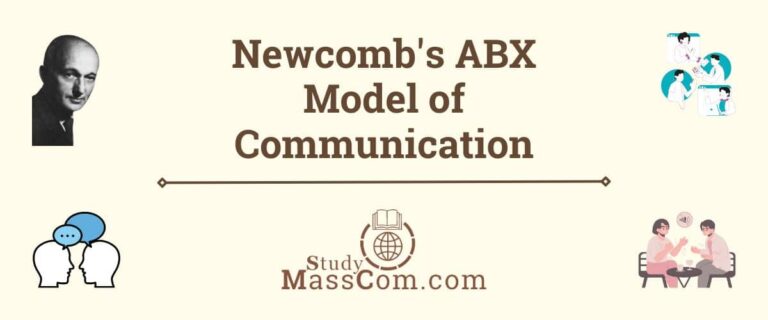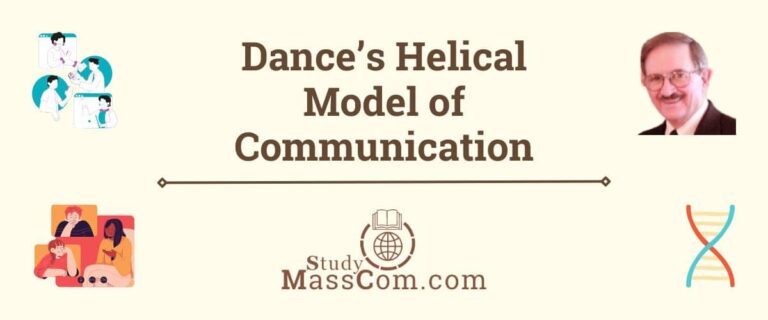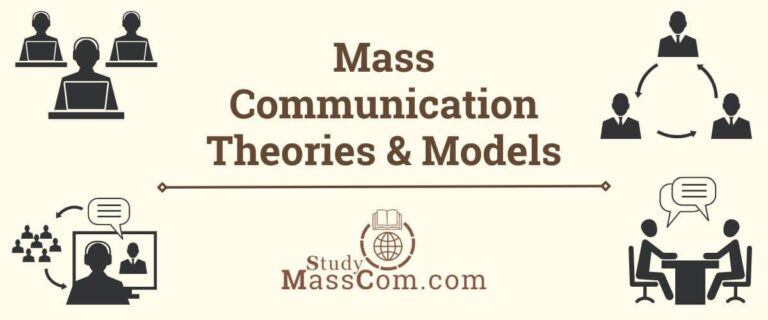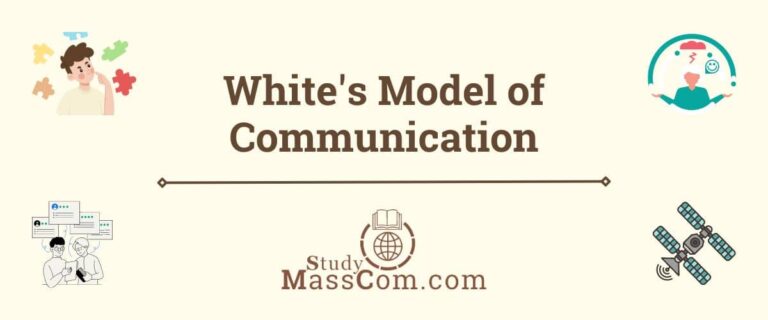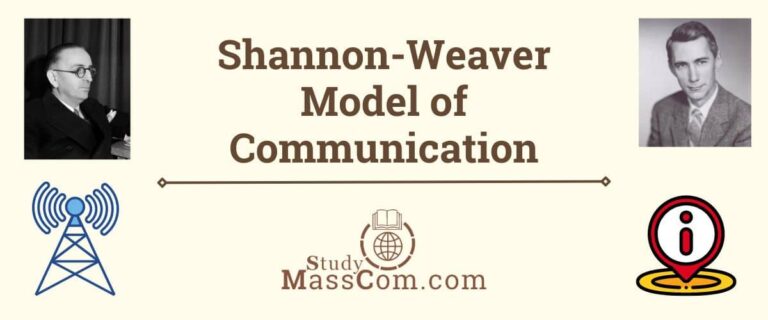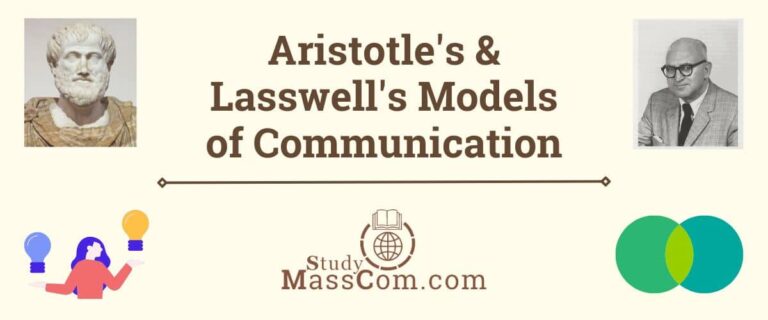Cultivation Theory: Strengths and Weaknesses
In the modern world, television has become an integral part of our daily lives, influencing how we perceive and understand the world around us. The cultivation theory, developed by George Gerbner and Larry Gross in the 1960s and 1970s, provides a valuable framework for understanding the long-term effects of television on viewers’ perceptions and attitudes. Cultivation theory has been applied to various aspects of media studies, including examining the influence of television on perceptions of violence, crime, political attitudes, and social norms. While it has received both support and criticism, cultivation theory remains a significant framework for understanding the impact of television on individuals’ collective perceptions and attitudes.

The Origins of Cultivation Theory
Cultivation theory emerged as a response to concerns about the impact of television on individuals and society. During the 1960s and 1970s, television was becoming more prevalent, and researchers were interested in exploring how exposure to TV content might influence viewers’ beliefs and behaviors. George Gerbner, a prominent communication scholar, and Larry Gross developed cultivation theory to address these questions.
Definition of Cultivation Theory
Cultivation theory is a communication theory that proposes that prolonged exposure to television content shapes individuals’ perceptions of social reality and influences their attitudes, beliefs, and values. Developed by George Gerbner and Larry Gross in the second half of the 20th century, the theory suggests that television viewers gradually develop a shared understanding of the world that aligns with the portrayals and messages presented in media.
The central premise of cultivation theory is that television content, particularly the prevalent themes and patterns portrayed over time, can shape viewers’ perceptions of the real world. This effect is more pronounced for heavy viewers who spend more time watching television, leading to what is known as the “cultivation differential” – the difference in attitudes and beliefs between heavy viewers and light viewers. Heavy viewers tend to adopt the views presented in media content, leading to a skewed perspective of reality.
The theory also emphasizes the concept of “mainstreaming,” where television content promotes a dominant set of values and ideologies that cut across various social groups, contributing to a homogenization of attitudes and beliefs among diverse audiences. Additionally, “resonance” occurs when viewers’ real-life experiences align with the portrayals seen on television, intensifying the cultivation effect.
Key Concepts of Cultivation Theory
Cultivation Differential
The cultivation differential refers to the difference in perceptions and beliefs between heavy TV viewers and those who watch less television. The theory posits that individuals who spend more time watching television are more likely to internalize the values, attitudes, and worldviews portrayed in media content. Over time, this exposure leads to a skewed perspective of reality, as heavy viewers start to believe that the depictions in media represent the actual state of the world.
Mainstreaming
Mainstreaming is a process by which television content promotes a dominant set of values and ideologies that cut across different social groups. Television has the power to shape collective perceptions and attitudes, leading to a convergence of views among diverse audiences. For example, news programs may present a particular perspective on political issues, influencing how viewers from different backgrounds perceive those issues.
Resonance
Resonance occurs when real-life experiences align with the portrayals seen on television. When viewers encounter events or situations similar to those depicted in media, the cultivation effect is intensified. This alignment reinforces the perceptions cultivated by television, making the impact even more profound. For instance, individuals living in high-crime areas who frequently watch crime dramas may be more fearful and perceive their neighborhoods as more dangerous due to the resonance between media content and their experiences.
Learn about the Media Dependency Theory.
Strengths of Cultivation Theory
Cultivation theory offers several strengths that have contributed to its significance and influence in the field of media studies. Some of its key strengths include:
Focus on Long-Term Effects
Cultivation theory emphasizes the cumulative impact of television exposure over time. This long-term perspective is essential because it recognizes that media effects are not always immediate but can develop gradually as viewers internalize media messages. By focusing on long-term effects, cultivation theory provides a more comprehensive understanding of how media shapes viewers’ perceptions and attitudes.
Broad Applicability
The theory can be applied to a wide range of media content, including both fictional programming and news media. This versatility allows researchers to explore how various genres and types of media influence viewers’ beliefs and understanding of the world.
Empirical Support
Cultivation theory has garnered substantial empirical support over the years. Numerous research studies have shown consistent patterns of media effects, particularly in the context of violence and fear of crime, political attitudes, and stereotypes. This empirical backing adds credibility to the theory’s claims.
Insights into Media Influence
Cultivation theory provides valuable insights into how media content can shape collective perceptions and attitudes. By understanding how television influences viewers, media practitioners, educators, and policymakers can develop more informed approaches to content creation, media literacy, and media regulation.
Exploration of the Socialization Process
The theory acknowledges that television plays a significant role in the socialization process, shaping individuals’ worldviews and belief systems. It highlights the influence of media as a socializing agent, alongside other institutions like family, education, and peer groups.
Consideration of Culturally Shared Meanings
Cultivation theory recognizes that television creates shared meanings and narratives within a culture. This shared symbolic environment contributes to the formation of a common understanding of the world among members of society.
Insights into Media Effects on Marginalized Groups
Cultivation theory has shed light on how media representations can affect marginalized and underrepresented social groups. By examining media portrayals of race, gender, and other social categories, researchers can identify and address potential stereotypes and biases in media content.
Practical Applications
The theory’s findings have practical applications in media literacy efforts and social change initiatives. By understanding the cultivation effect, media educators can design interventions to promote critical thinking and help viewers develop a more balanced and informed perspective on media content.
Overall, cultivation theory’s strengths lie in its holistic approach to understanding media influence, its empirical support, and its relevance in exploring the role of television in shaping perceptions, attitudes, and societal values. While the theory is not without its limitations, it has undoubtedly contributed valuable insights to the study of media effects and communication processes.
Explore the 7 steps of the communication process.
Weaknesses of Cultivation Theory
While cultivation theory has been influential in media studies, it is not without its criticisms and limitations. Some of the key weaknesses include:
Neglecting Individual Differences
Cultivation theory tends to overlook individual differences, treating all viewers as passive recipients of media messages. In reality, individuals may interpret and respond to media content differently based on their personal characteristics, experiences, and social contexts. Factors like age, education, and socio-economic status can play a significant role in how individuals are affected by television.
Oversimplification of Media Influence
Critics argue that cultivation theory tends to oversimplify the relationship between television content and viewers. It portrays viewers as passive recipients of media messages, neglecting the active role individuals play in interpreting and responding to media content. In reality, people engage with media in complex ways, and their responses may vary based on their cognitive processing, values, and personal experiences.
Limited Scope of Media Effects
Critics argue that cultivation theory focuses primarily on television’s impact while neglecting the effects of other media forms, such as the internet and social media. In today’s digital age, individuals consume content from various sources, making it essential to consider the broader media landscape’s influence on perceptions and attitudes.
Causality and Third-Variable Issues
Establishing a causal link between television viewing and changes in perceptions or attitudes can be challenging. The cultivation effect may be influenced by other variables, such as personality traits, social interactions, and real-life experiences. Isolating the effects of television from these other factors can be complex.
Lack of Causality
Cultivation theory is primarily correlational in nature, which means it establishes associations between television viewing and perceptions or attitudes but does not prove causality. It does not definitively demonstrate that exposure to television content causes changes in beliefs and attitudes. Other factors, such as individual differences, social interactions, and real-life experiences, may also influence viewers’ perceptions and attitudes.
Neglect of Other Media Forms
The theory was developed during a time when television was the dominant form of media. In today’s digital age, where individuals consume content from various platforms, cultivation theory’s focus on television may not fully capture the influence of other media forms, such as social media, video streaming, and online news.
Limited Scope of Cultivation Differential
While cultivation theory acknowledges the cultivation differential between heavy and light viewers, it does not provide a nuanced explanation for why heavy viewers are more influenced by media content. Factors such as selective exposure, psychological traits, and social contexts may play a role in shaping individual responses to television.
Inattention to Audience Interpretation
The theory does not pay sufficient attention to how viewers interpret media messages and the potential for resistance or negotiation of meanings. Viewers may actively challenge or reinterpret media content, especially when it conflicts with their own beliefs and values.
Learn about the strengths and weaknesses of Uses and Gratification Theory.
Focus on Mainstream Content
Cultivation theory’s emphasis on mainstream content may overlook the effects of niche or alternative media that target specific subgroups. Different media content may have varied cultivation effects on different audience segments.
Homogeneity of Heavy Viewers
The theory assumes that heavy viewers have a similar exposure to television content, which may not be true in reality. Heavy viewers have diverse preferences and may watch a wide range of programs, including those that challenge or contradict each other’s messages.
Applicability to Complex Issues
While cultivation theory has been well-applied to some topics like violence, it may not fully explain complex issues like political beliefs, which are influenced by multiple factors, including personal experiences, socialization, and cognitive processes.
Cultivation theory, like any communication theory, has its limitations. While it has been instrumental in understanding the effects of television on perceptions and attitudes, researchers should be cautious in generalizing its findings and consider these limitations when interpreting its results and implications.
Check out the differences between Cultivation Theory and Agenda-Setting Theory.
Empirical Evidence and Research Studies
Cultivation theory has been supported by various empirical studies that examine the relationship between television viewing and viewers’ perceptions and attitudes. Researchers have used both cross-sectional and longitudinal studies to assess the cultivation effect.
Mean World Syndrome
One of the most well-known findings associated with cultivation theory is the “mean world syndrome.” This term was coined by George Gerbner to describe heavy TV viewers’ perception that the world is more dangerous and violent than it actually is. Research has consistently shown that individuals who watch more television tend to overestimate the prevalence of crime and violence in society. This perception is primarily influenced by the high levels of violence depicted in fictional programming and news media.
Long-Term Effects
Longitudinal studies have demonstrated that the cultivation effect intensifies over time. As viewers continue to consume television content, their perceptions align more closely with the portrayals seen on TV. This cumulative impact reinforces the cultivation differential, making heavy viewers’ beliefs and attitudes more distinct from those of light viewers.
Social and Political Attitudes
Cultivation theory also extends to social and political attitudes. For example, exposure to certain political ideologies through television can influence viewers’ opinions on various issues. Research has shown that consistent exposure to specific political perspectives can lead to shifts in viewers’ attitudes and beliefs, affecting their political behavior and voting decisions.
Applications of Cultivation Theory
Despite its limitations, cultivation theory has practical applications in understanding media’s role in shaping society and informing media literacy efforts. Some notable applications include:
Media Education
Media literacy programs can incorporate cultivation theory to help individuals critically evaluate the content they consume. By understanding the potential impact of television on perceptions, viewers can develop a more discerning approach to media consumption and avoid over-reliance on television for their understanding of the world.
Discover similarities and differences between media literacy and digital literacy.
Social Change and Advocacy
Awareness of cultivation theory can empower activists and advocacy groups to address media representations that perpetuate harmful stereotypes or reinforce negative beliefs. By raising awareness about media’s influence, advocates can work towards more balanced and diverse portrayals that reflect the true diversity of society.
Explore the role of development communication in bringing positive change in society.
Examples of Cultivation Theory
To better illustrate cultivation theory and its impact on viewers’ perceptions and attitudes, let’s explore some examples:
Violence and Fear of Crime
Cultivation theory predicts that heavy viewers of crime-related television content are more likely to overestimate the prevalence of violence and crime in society. For example, someone who frequently watches crime dramas, police procedurals, and news programs that focus on violent crimes may develop a heightened sense of fear and perceive their community as more dangerous than it actually is. Over time, this perception becomes ingrained, leading to the cultivation of a “mean world syndrome” where the individual believes the world is more violent and dangerous than it statistically is.
Stereotyping and Social Perceptions
Television often portrays certain social groups or individuals in stereotypical ways. For instance, certain racial or ethnic groups might be disproportionately represented as criminals, villains, or side characters with limited depth in fictional programs. As heavy viewers consume these portrayals consistently, their perceptions of these groups may become influenced by the stereotypes presented on screen. This can lead to the cultivation of biased attitudes and prejudices towards those social groups in real life.
Political Attitudes and Ideologies
Television news programs and political talk shows can have a cultivation effect on viewers’ political attitudes and beliefs. Suppose a viewer consistently watches news channels that promote a particular political ideology or party. In that case, they may gradually adopt those perspectives and develop a more favorable view of the political party or ideology presented. Over time, this cultivation can lead to a convergence of political attitudes among heavy viewers and shape their voting decisions and political behaviors.
Consumer Behavior and Materialism
Television advertisements often portray a consumerist lifestyle, emphasizing the importance of material possessions and appearance. Heavy exposure to such advertising can cultivate a consumerist mindset among viewers, leading them to place greater importance on acquiring material goods and associating possessions with personal happiness and success.
Gender Roles and Body Image
Television shows and commercials often perpetuate traditional gender roles and unrealistic body standards. Heavy exposure to such content can cultivate gender stereotypes and unrealistic expectations about body image. For instance, young girls who frequently watch shows where women are portrayed as passive or overly focused on appearance may internalize these representations and adopt traditional gender roles later in life.
Check out the Feminist Theory of Media.
Environmental Attitudes
Television programming can influence viewers’ attitudes toward environmental issues. Nature documentaries that emphasize the beauty and importance of preserving the environment may cultivate pro-environmental attitudes among viewers. Conversely, shows that portray environmental degradation as insignificant or justified may cultivate a more apathetic or dismissive stance towards environmental concerns.
Perceptions of Law Enforcement and Justice
Television crime dramas often portray law enforcement as highly competent and effective in solving cases. Heavy viewers of such shows may develop a more favorable view of law enforcement agencies and their abilities. Conversely, shows that depict corruption or ineptitude in law enforcement may cultivate a more negative perception of police and justice systems.
These examples demonstrate how television content, through prolonged exposure, can shape viewers’ perceptions and attitudes on a wide range of topics, from crime and politics to gender roles and environmental issues. Cultivation theory highlights the importance of critically analyzing media messages and being mindful of the potential impact of television on our beliefs and understanding of the world.
Conclusion
Cultivation theory remains a significant and influential perspective in the study of media effects. By shedding light on the long-term impact of television on viewers’ perceptions and attitudes, this theory has informed discussions about the media’s role in shaping social reality. While criticisms exist, cultivation theory continues to provide valuable insights into the complex relationship between media consumption and its effects on individuals and society. As the media landscape continues to evolve, cultivation theory remains relevant for understanding how media influences our collective worldview.
FAQs
Cultivation theory is a media theory that suggests prolonged exposure to television content shapes viewers’ perceptions and attitudes about the real world. Developed by George Gerbner and Larry Gross, the theory posits that heavy TV viewers tend to internalize the values and beliefs depicted in media, leading to a skewed understanding of social reality. Cultivation theory highlights the cumulative effects of television viewing over time and emphasizes the influence of media on societal perceptions and norms.
Cultivation theory is important because it provides valuable insights into how television and media content can shape individuals’ perceptions, attitudes, and beliefs about the world. By understanding the long-term effects of media exposure, researchers, educators, and policymakers can address the potential impact of media on society. It highlights the role of television as a socializing agent, influencing shared cultural meanings and beliefs. Cultivation theory also informs media literacy efforts, promoting critical thinking among viewers to better navigate media messages and understand their potential effects. Its significance lies in shedding light on the complex relationship between media consumption and its influence on individuals and society.

